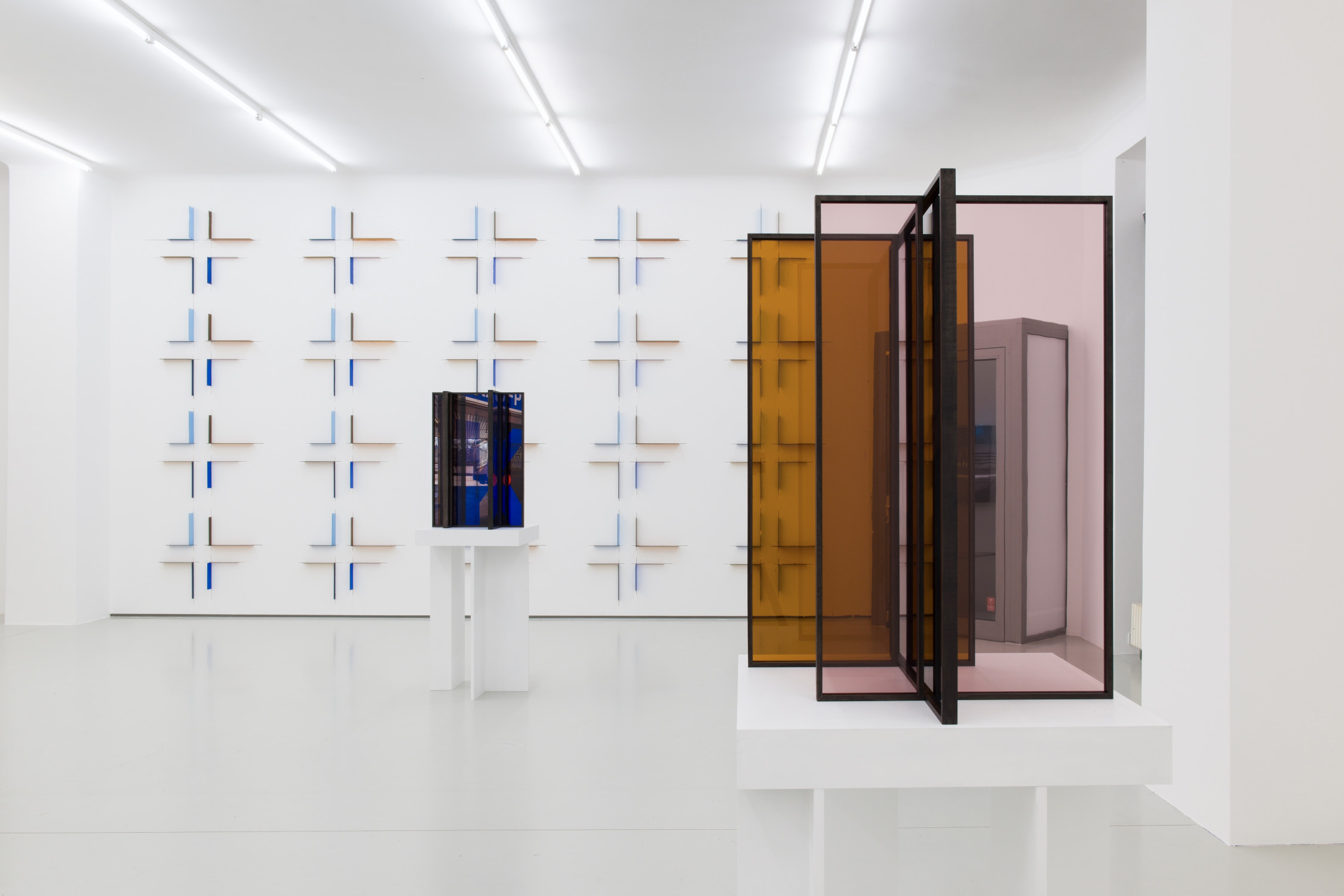
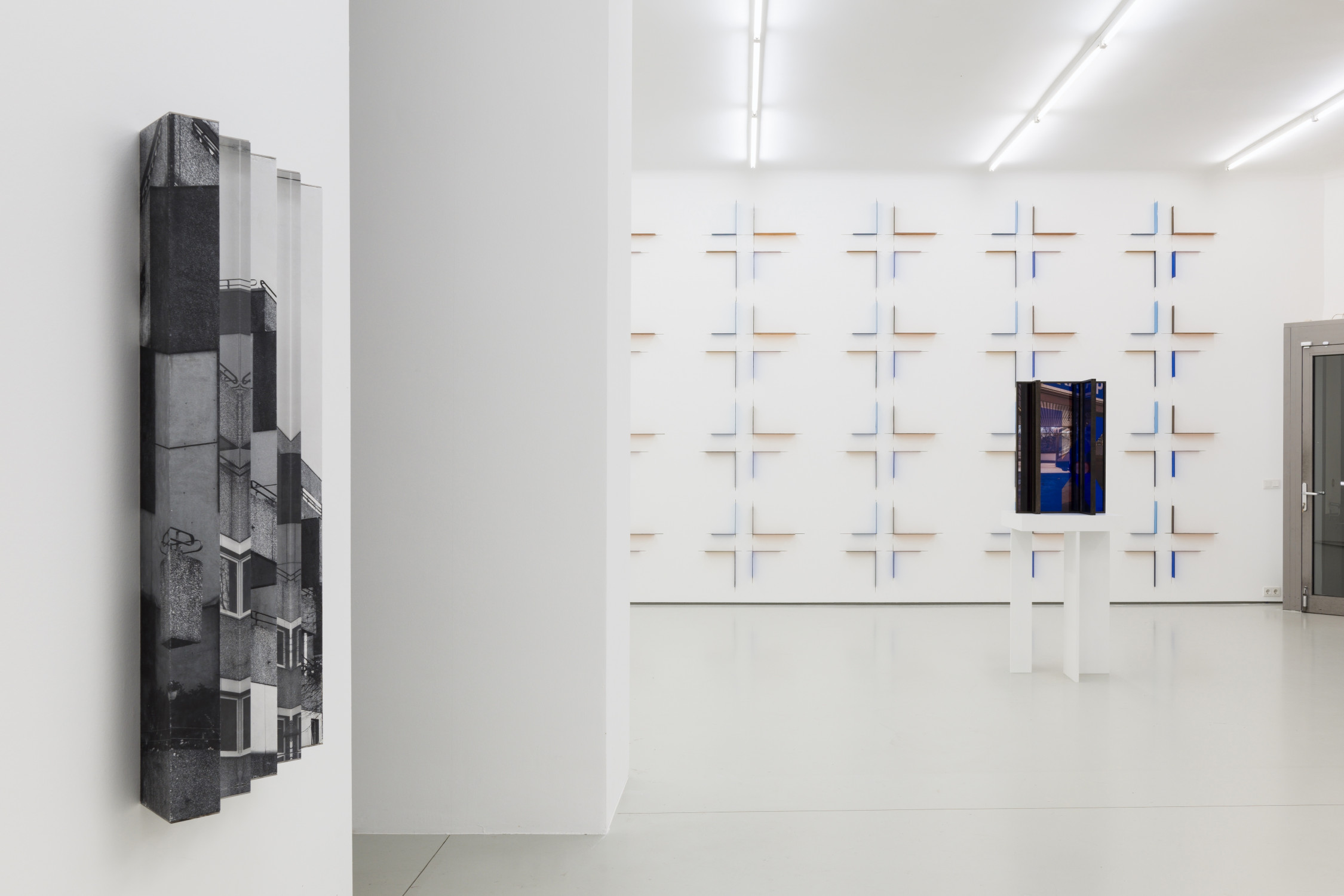
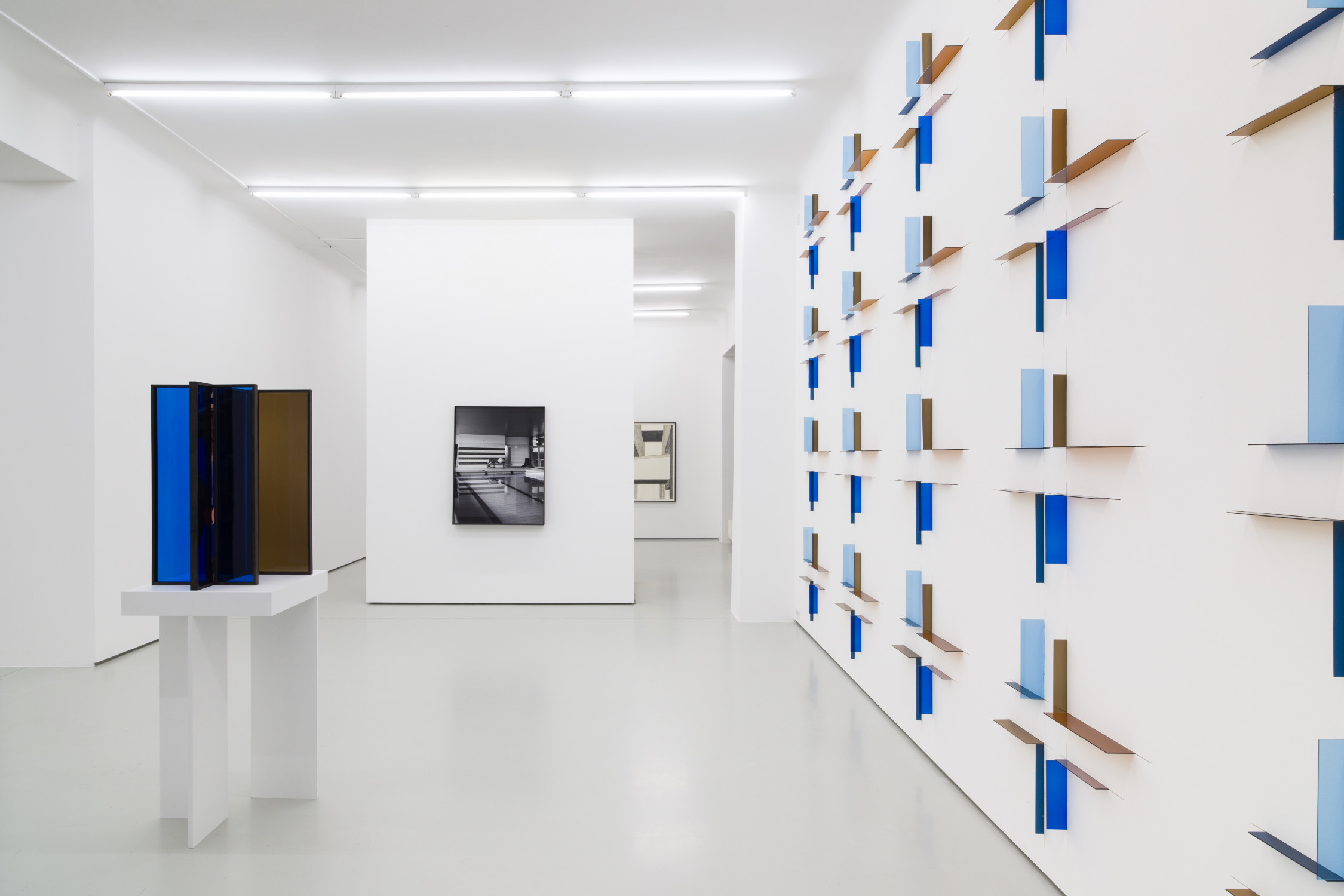
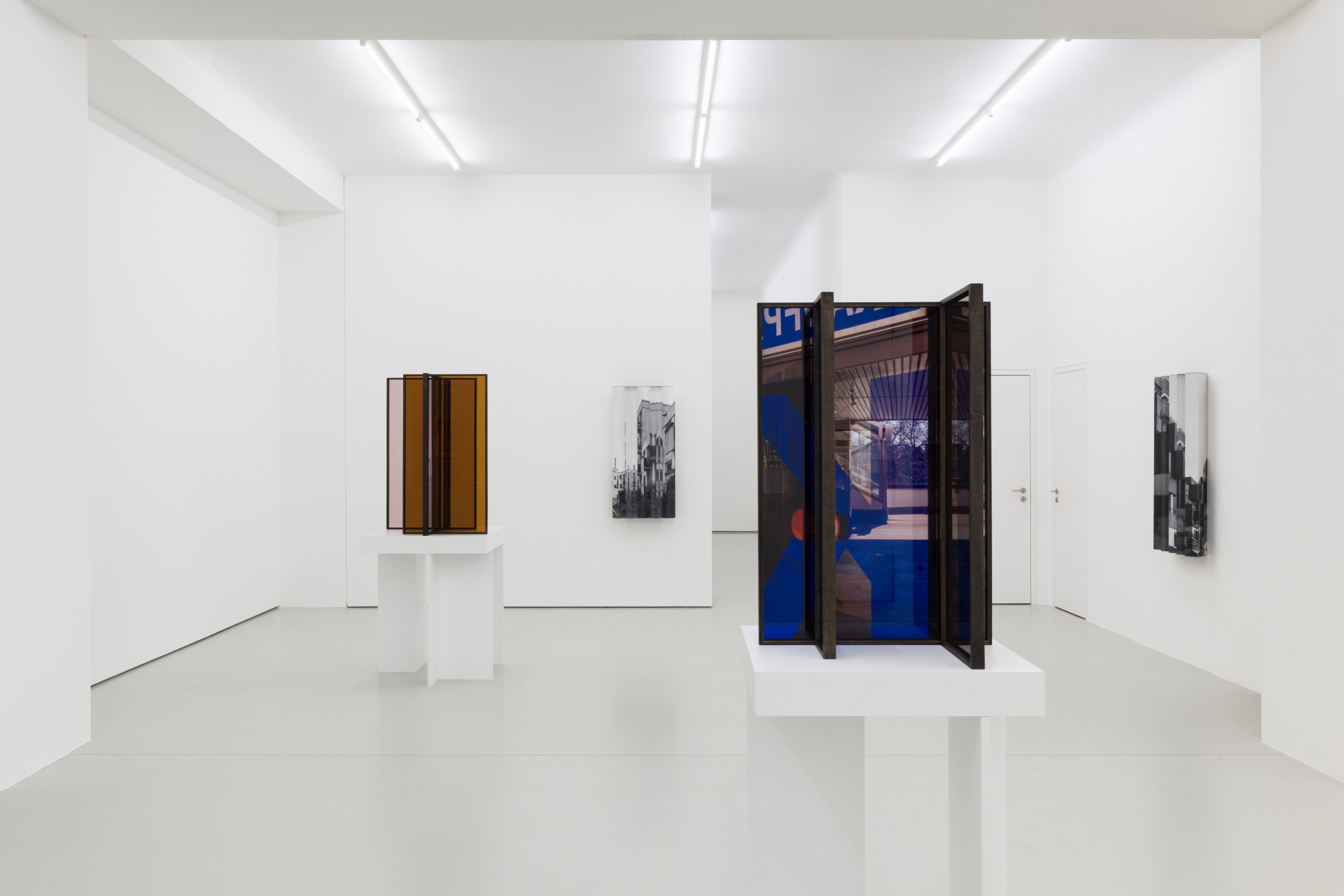
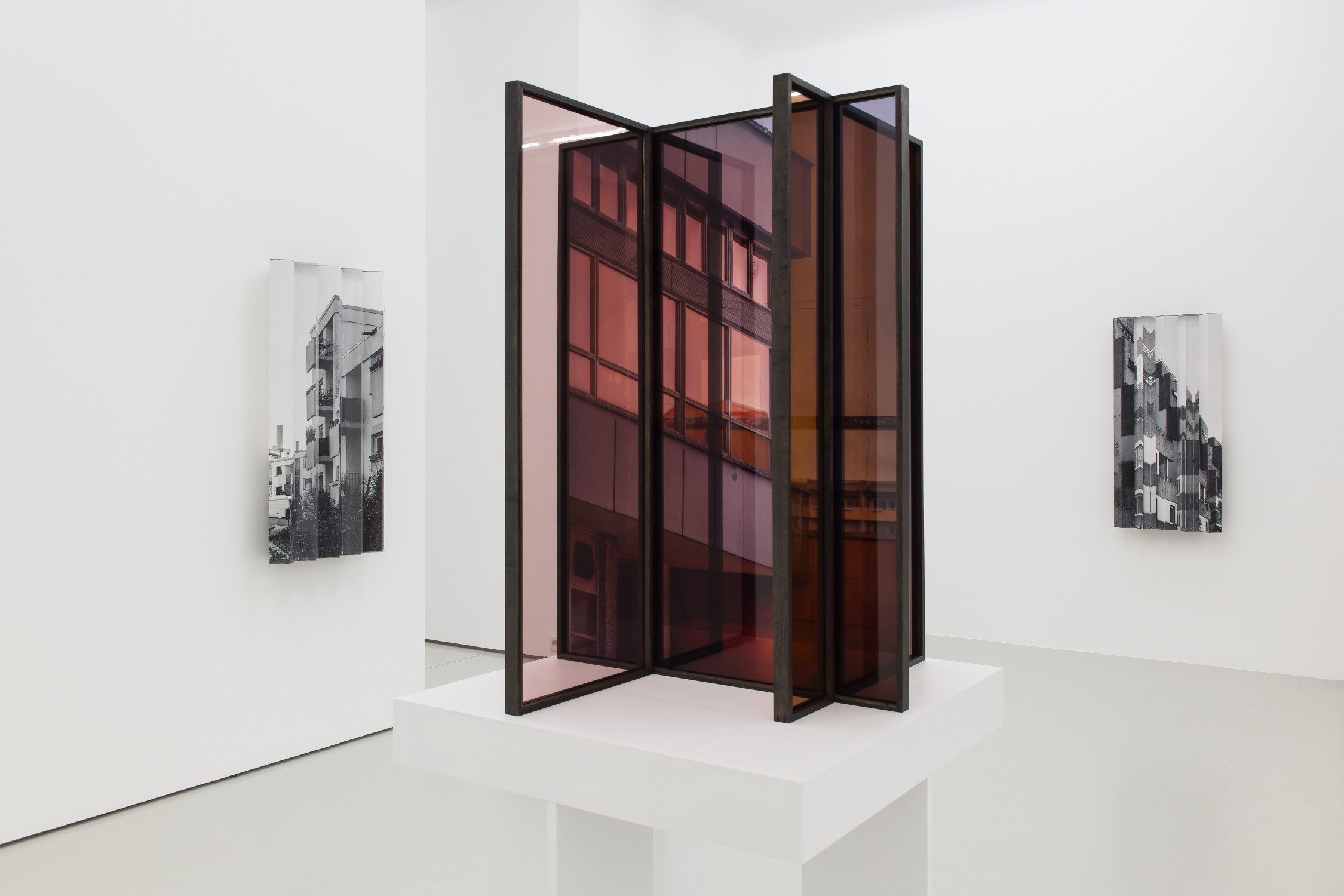

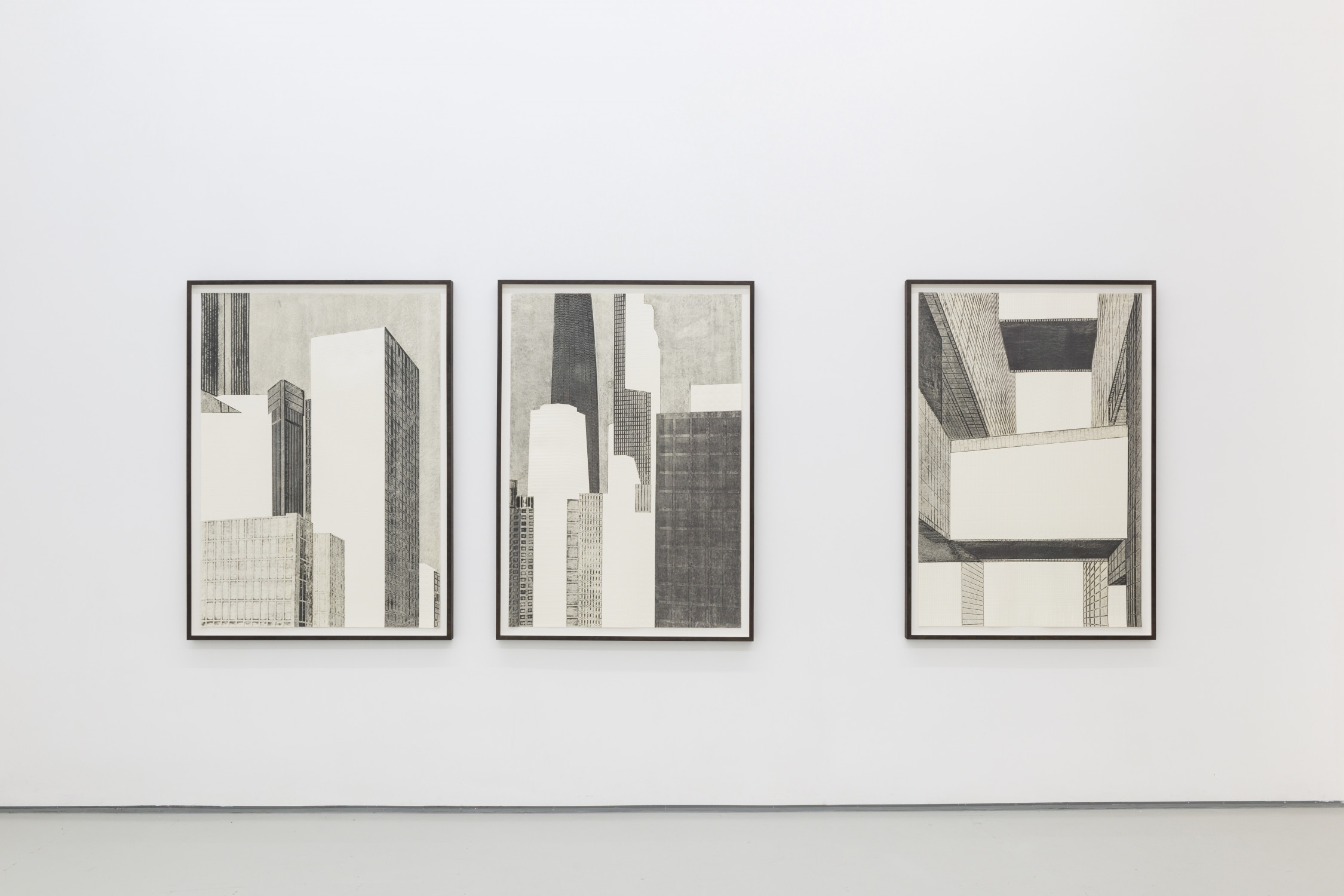
Sinta Werner
Einfassung des Blicks
Sep 15 – Oct 21, 2023
Opening: Sep 15, 6-9pm
Our spatial perception is based on our visual experience, which is increasingly shaped by the ubiquity of digital media and mediated images. This development significantly impacts our view of the world, our sense of body and space, and our understanding of reality. What effect does this have on our concept of the present, our sense of physical location when more and more images are based on a grid-like, predetermined configuration, a rectangular frame?
According to an influential essay[1] by American art theorist Rosalind Krauss, the grid serves not only as a symbol but also as a myth in modern art. “The grid’s mythic power,” Krauss contends, “is that it makes us able to think we are dealing with materialism (or sometimes science, or logic) while at the same time it provides us with a release into belief (or illusion, or fiction).”
It is this contradictory quality of the grid described by Krauss that Sinta Werner continues to consider in her work, making it pictorial and sculptural. In the recurrent use of glass as a material, Werner’s recent work takes up the modernist principle of the grid, permeating and illuminating it. Often based on architectural photography, her objects, paintings, and wall pieces offer an unexpected view of urban spaces and the architectural systems of order we associate with them.
The large-format glass installation in the main exhibition space, Einfassung des Blicks (Framing of the View) illustrates the flexible interplay of structure and material. Eight coloured panes of glass set into the wall form the primary elements of a regular but open grid structure, akin to those found in graphic layouts or geometrically planned cities. As in an ambiguous image, perception alternates between the dominance of two patterns: rectangular wall surfaces defined by the glass panes and cross structures formed by the glass panes, like crop marks. Depending on the angle of view – frontal or lateral, close or distant – there is also an alternating mixture of the two complementary colours of the glass panes, blue and orange, cold and warm. The colour accents of the shadows cast on the wall also have a different effect depending on one’s position in the room, adding another immaterial dimension to the work.
The two colours of the wall work are partly taken up in Einfassung des Blicks, two works with framed glass objects. Einfassung des Blicks II consists of a enclosed construction of wood framed glass panes, one of which is printed with a photographic motif. One sees a glass door with a lobby behind it, leading into an outside space. The question of what is inside and outside the motif also arises when looking at the object itself, the experience of the exhibition space is mirrored in the work and becomes part of it. Werner’s play with spatial levels uses our empirical values in deciphering complex spatial situations – and simultaneously hijacks them.
In her work Simultane Abweichung (Simultaneous Deviation), Sinta Werner also utilizes the reflective properties of glass, creating a stage-like space of illusion that is deliberately misleading. The photograph of an indoor swimming pool with a reflective surface of water suggests a tiled wall where it is not. At the same time, the water’s surface appears to be a glass pane on which the grid formed by pool floor tiles looks as if floating. The boundaries between these optical impressions and the real angled glass pane integrated in the work become blurred in the act of perception: the glass pane itself appears to be reflecting, yet only shows the same grid of pool floor tiles printed on it. Werner thus adds an unexpected dimension to the effect of the water’s reflection, challenging the gaze. What is demanding about this supposed reflection is that the eye cannot align the different grids, cannot calibrate them. The result is a blur in which the promise of an ordering central perspective turns out to be nothing more than a desire to see as we are used to.
If the artist illusorily expands space in Simultane Abweichung, she truncates it in the two wall objects, Geteilte Aufmerksamkeit shown: here Werner uses a fanfolded wooden panel as the basis for a black-and-white view of residential houses, complemented by square Plexiglas pillars. These columns transform the clear three-dimensionality of the houses into a hall of mirrors. Since the perception of the rather inconspicuous motifs – typical Berlin buildings of post-war architectural modernism – is supported by the knowledge of their actual geometry and can be compared with the forms perceived in Werner’s works – the brain has to find a solution. The visible geometric shapes, implausible in reality, are arranged in a new and meaningful way when viewed from the front; the usual perception and logic of an image is questioned. Werner’s selection of the buildings creates the basis for the works in which we (want to) detect the uniformity of the grid in them. This also reflects a social dimension, as it carries a questionable individual desire for conformity, uniformity, repetition and similarity. The architecture that Werner chooses is therefore a symbolic image of the unwillingness, the inability to break out of the social norms of modernity.
Space is expanded and trimmed in Opportunities of Displacement, a work in which Werner deconstructs the grid system by superimposing transparent motifs printed on glass. We see the multiform image of a single building: the Hong Kong Cultural Centre with its tiled façade. The originally white tiles of the building, colourless in the work, give the grouts more visibility, creating a grid, like a technical drawing in the dimensions of a theatre set model. As one traverses by the work, the interior and exterior shift in a maze-like manner, creating new, imaginary spaces.
Grids are also the key design element in the three embossed prints exhibited, Ambivalenz des Rasters (The Ambivalence of the Grid). In these cityscapes, Werner has tinted some areas with different shades of graphite, while other areas remain unshaded, highlighting the embossed grids of the buildings depicted and thus emphasising the print template of the images. In the case of the graphite shaded areas, blurring effects occur through the interaction with the paper that contrast sharply with the accuracy of the digital files that preceded the prints but, at the same time, recall the patina of the surfaces of actual urban spaces. As in most of the exhibition, the difference between the architecturally calculated and the manually processed is revealed here as an effect of simulated reality.
Text by Martin Conrads
[1] Rosalind Krauss: Grids. In: October, vol. 9 (Summer 1979), p. 54.